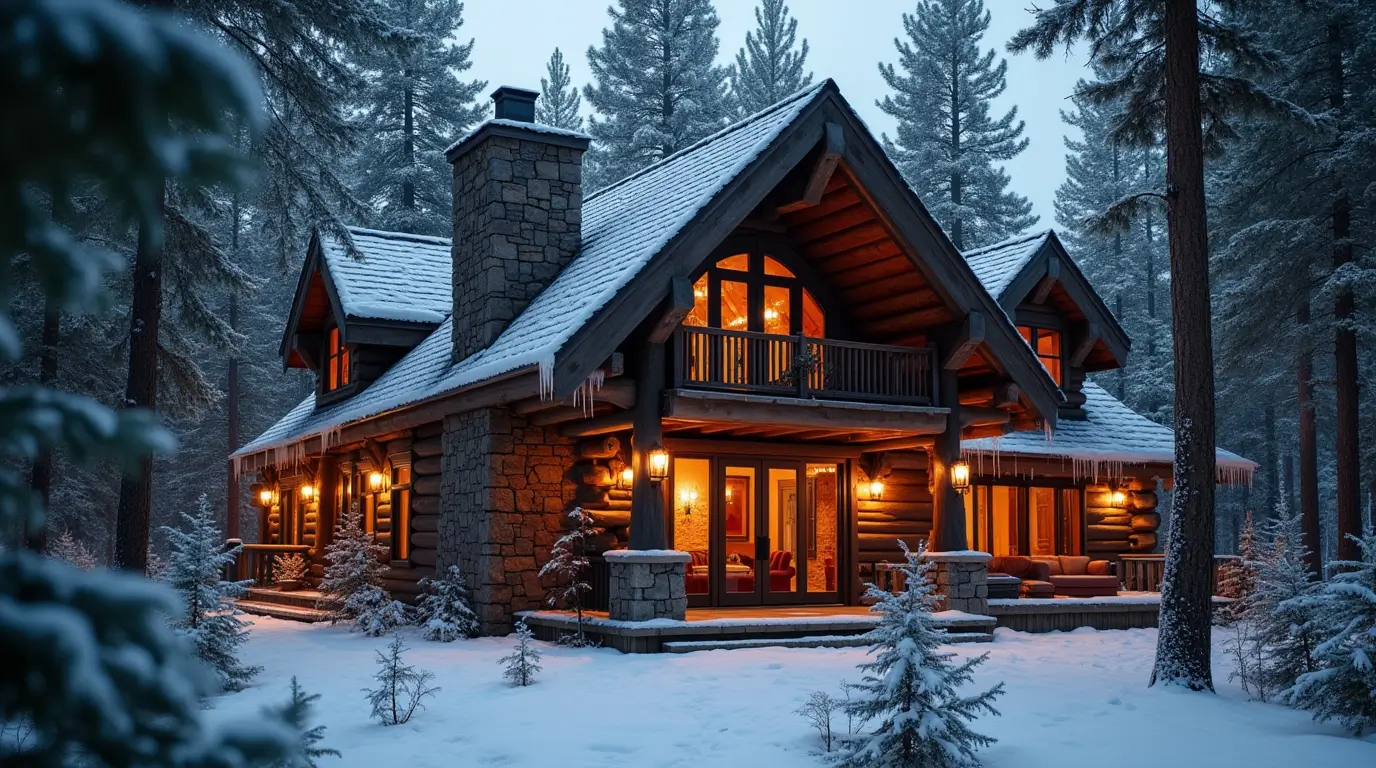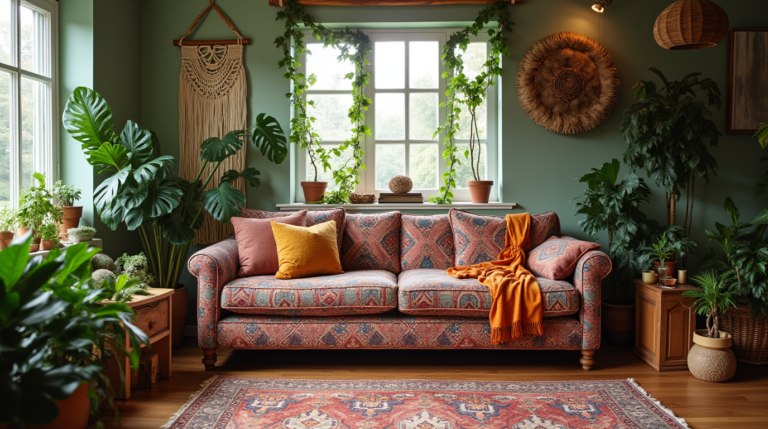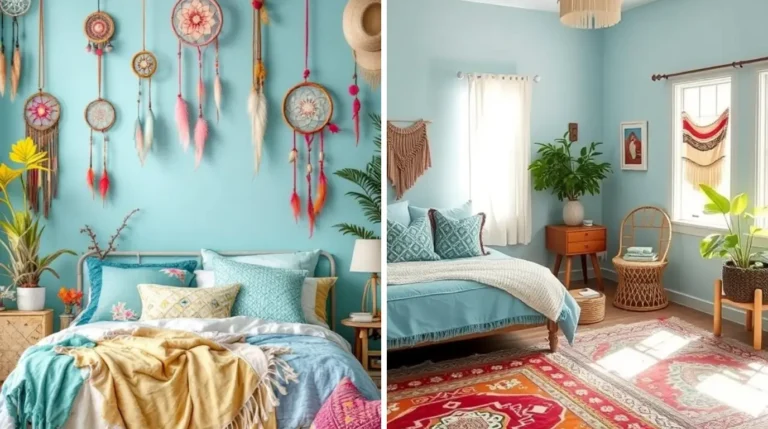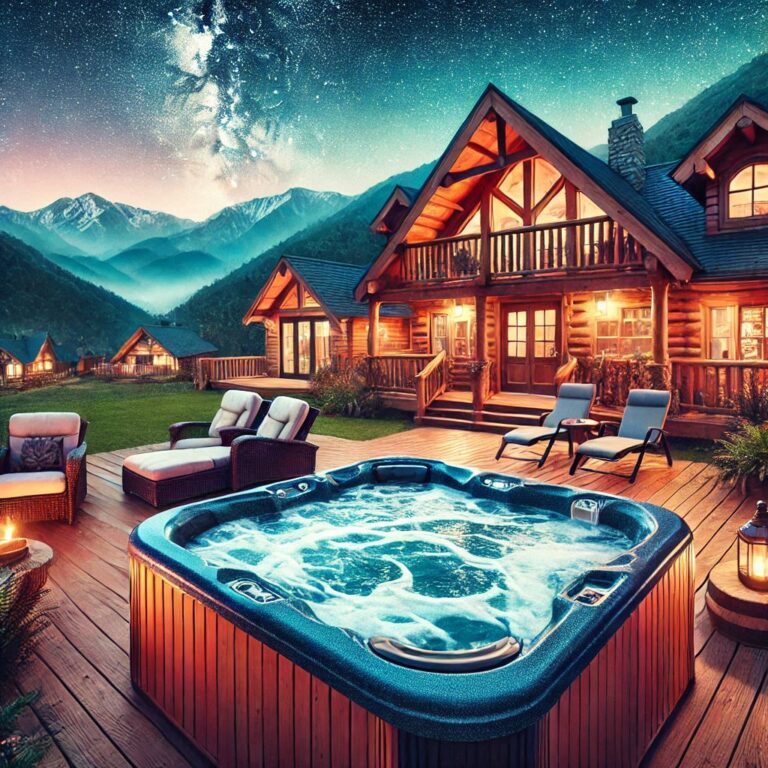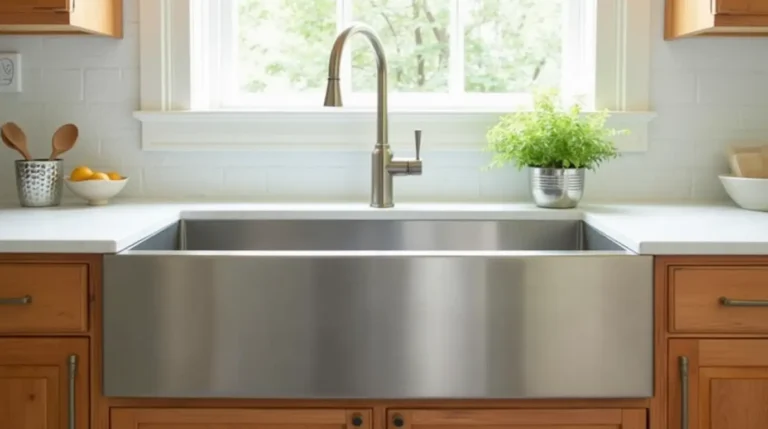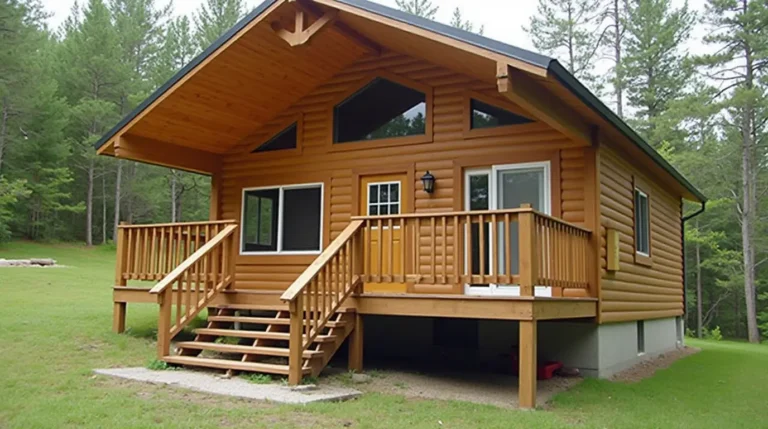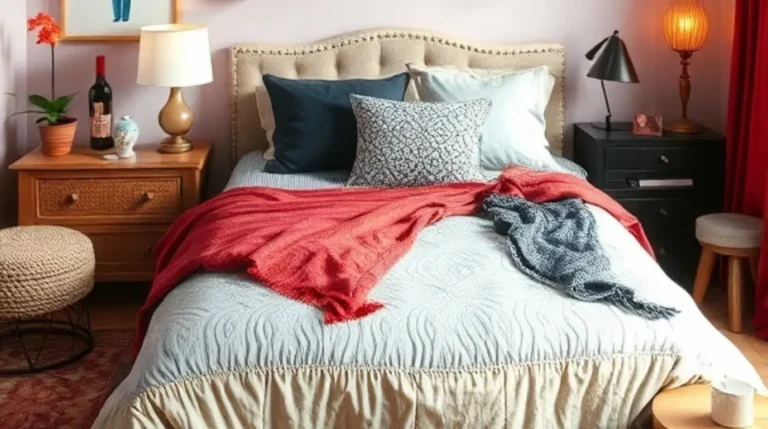Rustic Log Cabin Living: How To Embrace The Lifestyle
Imagine escaping to a secluded log cabin retreat, surrounded by nature’s serenity. The allure of rustic log cabin living lies in its simplicity and connection to the great outdoors.

This lifestyle offers a tranquil retreat from the hustle and bustle of modern life. It invites you to unwind and rejuvenate amidst breathtaking landscapes.
As we explore the essence of rustic log cabin living, you’ll discover how to bring the charm of the wilderness into your home. You’ll create a cozy and inviting atmosphere that reflects your love for nature.
Key Takeaways
- Discover the appeal of rustic log cabin living and its benefits.
- Learn how to create a cozy atmosphere inspired by nature.
- Explore design ideas for your log cabin retreat.
- Understand the importance of simplicity in rustic living.
- Find out how to connect with nature through your living space.
The Allure of Rustic Log Cabin Living
A cabin in the woods is more than a place to stay. It’s a doorway to a simpler, more fulfilling life. The charm of rustic log cabin living comes from its mix of history, modern charm, and health perks.

The Historical Significance of Log Cabins in American Culture
Log cabins have played a big role in American history. They were homes for pioneers, symbols of the frontier, and even campaign symbols. These cabins stand for adventure, self-reliance, and a strong connection to the land.
The Modern Appeal of Returning to Simplicity
In today’s world, the idea of a cozy woodland lodge is very appealing. Our fast-paced lives often leave us feeling disconnected from nature. Log cabin living offers a peaceful escape, helping us reconnect with the outdoors and ourselves.
Log cabins also offer flexibility. They can be a full-time home or a weekend getaway. This flexibility, along with the calm surroundings, makes them a great choice for those looking for a balanced life.
Physical and Mental Health Benefits of Cabin Living
Living in a log cabin is good for your health. The outdoors encourages physical activity like hiking and fishing. The clean air and quiet setting also boost mental health, reducing stress and improving well-being.
Disconnecting from technology and reconnecting with nature is also beneficial. It allows for reflection, rejuvenation, and a fresh start. This can help you return to your daily life with more energy and clarity.
In summary, the charm of rustic log cabin living is deep. It draws on history, the desire for simplicity, and the health benefits of nature. This makes it a compelling choice for those seeking a more meaningful, balanced life.
Defining Your Rustic Log Cabin Vision
Creating a clear vision for your rustic log cabin is the first step. It involves thinking about several key factors. These will shape your project.
Full-Time Residence vs. Vacation Retreat
Deciding if your cabin will be a full-time home or a vacation spot is crucial. This choice affects the design, size, and function of your cabin.
If it’s a full-time home, you’ll need to plan for daily living needs. This includes storage and a larger space. A vacation home or rustic vacation home might be simpler and smaller, focusing on leisure.
Location Considerations: Remote Wilderness vs. Cabin Communities
The location of your timber cabin getaway is key. You might want the quiet of a remote area or the community of a cabin community. Each choice has its own benefits and drawbacks, like accessibility and utility availability.
| Location Type | Pros | Cons |
|---|---|---|
| Remote Wilderness | Complete privacy, closer to nature | Limited accessibility, potential utility challenges |
| Cabin Communities | Community interaction, potentially easier access to amenities | Less privacy, possible regulations and HOA rules |
Size and Layout Planning for Your Needs
Determining your cabin’s size and layout is essential. Think about your current and future needs. This includes the number of people, desired amenities, and specific requirements.
Make a detailed floor plan. Consider the flow of your cabin. An open-plan living area can make it feel larger. Separate bedrooms offer privacy.

Finding the Perfect Location for Your Log Cabin
Choosing the right spot for your log cabin is key. It affects how your cabin looks, works, and lasts. A good location makes your cabin both beautiful and practical.
Evaluating Land: What to Look For
When picking land for your cabin, several things matter. The land’s shape, soil quality, and natural features are all important.
Soil and Drainage Assessment is crucial. It keeps your cabin’s base stable and water flow right. Bad drainage can harm your cabin.
- Check the soil type and how well it holds weight.
- Look at the land’s drainage to avoid flood areas.
- Think about how your cabin will affect the land.
Natural Features and Views make your cabin more appealing. Place your cabin to get the most sunlight and views.
| Land Feature | Considerations | Benefits |
|---|---|---|
| Water Bodies | Proximity to water sources, flood risk | Aesthetic appeal, water supply |
| Vegetation | Type, density, and maintenance needs | Privacy, shade, and habitat creation |
| Topography | Slope, elevation, and accessibility | Views, drainage, and building challenges |

Climate and Weather Considerations
The weather in your area affects your cabin’s comfort and durability. Knowing the local weather helps you build a cabin that can handle extreme weather.
Accessibility and Utilities Challenges
Getting to your cabin and having utilities nearby are key. A secluded spot is nice, but it must be reachable and have basic services.
Think about how close your cabin is to roads and paths. Also, consider if you can get electricity, water, and internet there.
Building vs. Buying a Rustic Log Cabin
Thinking about a remote wood cabin? You must choose between building or buying. This choice affects your budget and how you’ll live there.
Building a log cabin lets you tailor it to your liking. You can pick the features and materials that fit your style and needs.
Custom Building Process: Timeline and Considerations
Building a cabin involves several steps, from planning to finishing touches. You need a solid plan and budget. Think about land prep, getting materials, and labor costs.
Building a remote wood cabin means planning for site access and utilities. These can be big challenges.
Finding and Evaluating Existing Log Cabins
Buying a cabin is quicker, with the perk of moving in fast. But, you must check the cabin’s condition. Look at its structure, upkeep needs, and if it needs updates.

Cost Comparison and Budget Planning
It’s key to compare building and buying costs. Building a cabin’s price varies by materials, size, and location. Buying might be more predictable but think about renovation costs.
Choosing to build or buy a remote wood cabin depends on your situation and budget. Weighing the pros and cons helps you make the right choice.
Essential Design Elements of a Rustic Log Cabin
A rustic log cabin is more than a building. It’s a mix of natural materials, careful planning, and beauty. It should feel warm and cozy, yet strong and useful.

Traditional vs. Contemporary Log Construction Methods
The way a log cabin is built affects its look, feel, and strength. Traditional log construction uses old techniques like notching mortise and tenon joinery. This gives it a classic, genuine look. Contemporary methods might use new materials and tech, like pre-fabricated panels, for better efficiency and uniformity.
Deciding between traditional and modern methods depends on what you value most. Traditional methods add a handmade touch, while modern ones offer better insulation and weather protection.
Choosing the Right Wood Species and Treatments
Picking the right wood is key for your log cabin’s life and look. Different woods last longer, resist pests and look better. Cedar, for example, fights off rot and bugs well and looks great.
Wood treatments can also make your cabin last longer. You can use natural oils to protect the wood or stronger preservatives for more protection.
Structural Considerations for Longevity
Keeping your log cabin strong is crucial for it to last. This means good construction and regular care. The foundation, roof, and how the logs are shaped all matter for standing up to weather.
Regular checks and upkeep, like sealing gaps and looking for damage, are key. With solid building and care, your cabin can last for many years.
How to Create an Authentic Rustic Log Cabin Interior
Creating a rustic log cabin interior is about making a cozy and natural space. It’s not just about looks; it’s about warmth and connection to nature. Your cozy woodland lodge or cabin in the woods should feel welcoming.
Furniture Selection and Placement for Cabin Living
Choosing the right furniture is key for a rustic cabin feel. Use solid wood pieces that match your cabin’s logs.
You can pick between antique or new rustic furniture. Antique furniture adds history, while new pieces offer a clean, customizable look.
Antique vs. New Rustic Furniture
Antique furniture brings history and authenticity. Old wooden chests, vintage armchairs, or antique tables can be highlights.
New rustic furniture is durable and can be made to fit your cabin perfectly. It’s often from sustainably sourced wood.
Space-Saving Solutions for Smaller Cabins
In smaller cabins, space is crucial. Use multi-functional furniture like storage ottomans or nesting tables. This keeps your cabin tidy and open.
Lighting Solutions for Log Homes
Lighting greatly affects your cabin’s feel. Warm, soft lighting adds coziness. Table lamps or floor lamps with linen shades are great choices.
Textiles and Accessories That Enhance the Rustic Aesthetic
Textiles are vital for coziness. Opt for wool, cotton, or linen for upholstery and drapery. Add woven baskets, vintage rugs, and nature-inspired art for a rustic touch.
Color Schemes That Complement Wood Interiors
Your cabin’s colors should match the wood’s natural beauty. Earthy tones like greens, browns, and tans are perfect. Neutral colors also work well to balance the look.
Setting Up Practical Systems for Off-Grid or Remote Cabin Living
Living in a remote log cabin or rustic vacation home requires reliable, off-grid systems. The goal is to create a self-sufficient space that meets daily needs. This should not harm the natural beauty around us.
Water Solutions: Wells, Rainwater Collection, and Filtration
Clean water is essential. You can drill a well, use a rainwater collection system, or both. Water filtration systems are also key to making sure the water is safe to drink.
| Water Solution | Initial Cost | Maintenance |
|---|---|---|
| Wells | High | Regular testing required |
| Rainwater Collection | Moderate | Regular cleaning of collection surfaces |
| Filtration Systems | Variable | Regular filter replacement |
Experts say, “A well-designed rainwater harvesting system can greatly reduce water costs and environmental impact.”
“The best way to get started is to quit talking and begin doing.” – Walt Disney
Walt Disney
Power Options: Solar, Wind, and Generator Backups
Many choose renewable energy like solar or wind for power. Generators act as backups when energy is low.
- Solar Power: Great for sunny areas.
- Wind Power: Good for places with steady winds.
- Generators: Useful as backup power sources.
Heating Your Cabin: Woodstoves, Fireplaces, and Alternative Methods
Heating is key, especially in cold climates. Woodstoves and fireplaces are common choices. But, heat pumps or radiant floor heating can also work well.
Efficient heating keeps you cozy and cuts down on energy use.
Waste Management and Septic Considerations
Good waste management keeps your cabin clean and healthy. You might need a septic system or a composting toilet, based on local rules and how much you use your cabin.
| Waste Management Option | Cost | Environmental Impact |
|---|---|---|
| Septic System | High Initial Cost | Potential for groundwater contamination if not maintained |
| Composting Toilet | Moderate | Low, if properly maintained |
By planning and setting up these systems, you can enjoy a rustic vacation home or timber cabin getaway. It will be both cozy and eco-friendly.
Seasonal Maintenance Guide for Your Rustic Log Cabin
To keep your secluded log chalet in top shape, follow a seasonal maintenance routine. This guide will show you the tasks to keep your cabin safe, comfy, and beautiful all year.
Spring and Summer Maintenance Tasks
When the weather gets warmer, spring is the best time to fix winter issues. Start by checking your cabin’s outside for damage or wear.
Log Treatment and Preservation
Use a log treatment to shield your cabin from the weather and pests. This involves cleaning the logs and applying a preservative to stop rot and bug damage.
Look for pests like termites or carpenter ants, and act fast if you find them. Sealing cracks or crevices around your cabin can stop infestations.
Fall Preparation for Winter
As fall comes, get your secluded log chalet ready for the cold. Check and clean your heating system, seal drafts, and make sure your roof is clear of leaves.
Winter Care and Emergency Preparedness
In winter, keep your cabin’s paths clear of snow. Also, have a plan for emergencies like a power outage or bad weather. Regularly check your plumbing and heating to avoid freezing and damage.
By sticking to this seasonal maintenance guide, you can enjoy your secluded log chalet all year. You’ll know it’s a safe and cozy retreat.
Embracing the Rustic Log Cabin Lifestyle
Living in a traditional log house is more than a home. It’s a way of life that connects you with nature. This lifestyle values simplicity, a strong bond with the environment, and community, which city life often lacks.
Connecting with Nature: Activities Around Your Cabin
Staying in a remote wood cabin lets you enjoy nature’s wonders. You can hike, fish, and forage for wild foods. It encourages an active lifestyle and appreciation for nature’s changes.
Gardening is another way to connect with nature. Growing your own food makes you self-sufficient. It’s rewarding to see your hard work grow into delicious fruits and veggies.
Building Community in Rural Settings
Living in a remote cabin doesn’t mean you’re alone. Many rural areas have close-knit communities. Making friends with neighbors and joining local events can make you feel part of a community.
Sharing skills like woodworking or cooking can strengthen bonds. It creates a sense of belonging and support among cabin dwellers.
Seasonal Celebrations and Traditions in Cabin Life
The rustic cabin lifestyle celebrates the seasons. Activities like maple syrup harvesting in spring or cozy autumn nights by the fire are common. These traditions add depth and connection to cabin life.
Keeping seasonal traditions alive gives cabin life meaning. It creates a sense of continuity and connection to nature.
Balancing Modern Conveniences with Rustic Living
While rustic living is simple, many cabin dwellers add modern comforts. They might use solar panels for power, satellite internet, or modern appliances. It’s about finding a balance that suits your needs.
Enjoying rustic living doesn’t mean you can’t have modern conveniences. It’s about finding a balance that makes life comfortable and enjoyable.
Conclusion: The Rewarding Journey of Rustic Log Cabin Living
Living in a rustic log cabin is a special journey. It combines simplicity, natural beauty, and personal growth. This lifestyle offers a chance to escape modern life and connect with nature.
Log cabins have a rich history in American culture. They are not just homes but also symbols of tradition. Building or buying a cabin requires careful planning and understanding of design and practical systems.
Whether you dream of living in a cabin full-time or just visiting, the benefits are clear. You’ll find happiness in living with nature. A rustic log cabin brings peace and beauty into your life.
FAQ
What is rustic log cabin living?
Rustic log cabin living means living in a log cabin, either traditional or modern. It’s often in a secluded, natural spot. This lifestyle values simplicity and charm.
What are the benefits of living in a log cabin retreat?
Living in a log cabin retreat offers many benefits. You get closer to nature and live more simply. It’s a chance to escape modern life’s stress. A cozy cabin in the woods is peaceful and serene.
How do I choose the right location for my rustic log cabin?
Choose a location based on nature, accessibility, and climate. You might want a remote cabin or one in a community. Think about what you need.
What are the key considerations when building or buying a log cabin?
Consider the construction method, materials, and design when building or buying. Think about cost, size, and layout. Also, check local building rules. A secluded cabin might need special care.
How do I maintain my rustic log cabin?
To keep your cabin in good shape, inspect and treat the logs regularly. Check for pests and damage. Make sure systems like plumbing and electrical work. Seasonal upkeep is key to protect your cabin.
Can I live off-grid in my rustic log cabin?
Yes, many live off-grid in their cabins. They use solar or wind power and collect rainwater. A remote cabin is perfect for this lifestyle.
How do I balance modern conveniences with rustic living?
To mix modern comforts with rustic living, add amenities like solar power. Keep the cabin’s natural feel. This way, you enjoy both worlds in your cabin.

